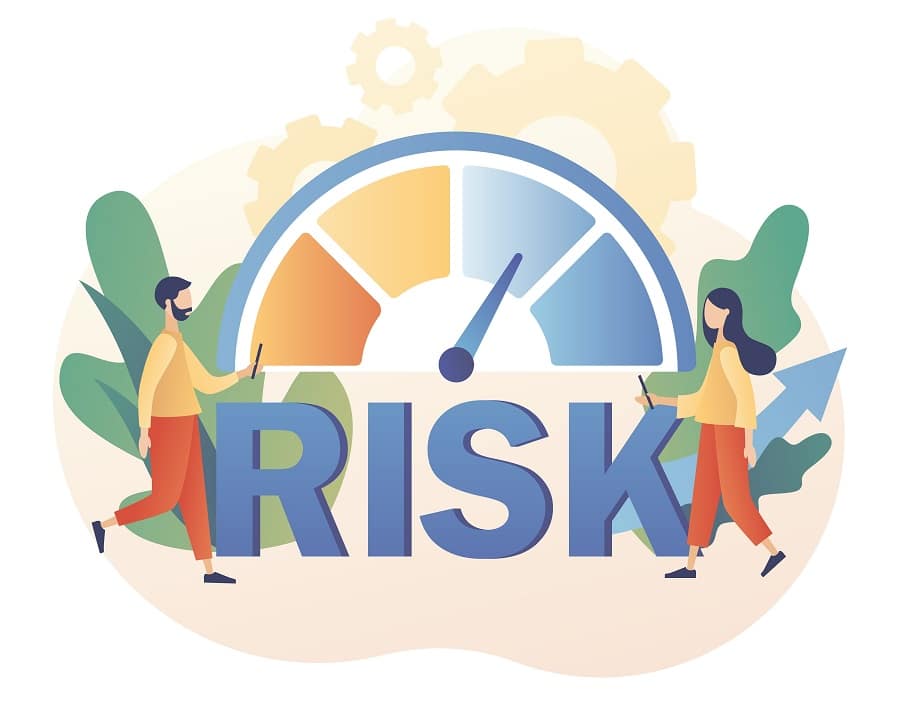From double extortion ransomware exfiltrating sensitive data to zero-day exploits taking critical apps offline, companies today face many cyber security risks. Highly motivated and sophisticated threat actors emerge constantly, and growing IT complexity from digital transformation initiatives widens the attack surface. Improperly managed or misunderstood cyber risk leaves any business vulnerable to attack.
A cyber security risk assessment formally reviews the risks posed to your information assets, the likelihood of different risks occurring, and the potential outcomes. Aside from helping to understand security risks better and reduce adverse business outcomes, an accurate risk assessment ensures you spend your security budget wisely.
Globally, projections show that the cost of cyber crime is set to reach $10.5 trillion by 2024. A security leaders survey showed that 68 percent felt their organizations’ cyber security risks were increasing, often because digital innovations happen faster than security can keep up with.
Keep reading for a detailed overview of cyber risk assessments along with a five-step plan you can use for your own company’s cyber risk assessments and a free downloadable risk assessment template.

What is a cyber security risk assessment? (200)
A cyber security risk assessment is a central part of an organization’s overall risk management process. The assessment feeds into other aspects of risk management, including monitoring and responding to risk.
What is a cyber security risk assessment template?
Since cyber risk assessments are complicated, templates provide a solid grounding for conducting an accurate assessment while also helping to develop a repeatable process. An effective template gives your cyber risk assessment a solid structure, simplifying the process. Here is a brief outline of the sections to expect in a good cyber risk assessment template:
- Introduction — An executive summary describing the purpose of the assessment in your overall security program and a brief note on its scope
- Methodology — List the participants, the questionnaires, and tools used to carry out the assessment, and describe any risk model used to form the basis of your assessment.
- Environment Characteristics — List the characteristics of your IT environment, including technology components, users, and data.
- Threats and Vulnerabilities— Compile and state all the vulnerabilities and threat sources to different aspects/systems in your environment.
- Results Matrix — The crux of a good template includes a matrix of risk assessment results featuring the likelihood of different risks occurring, impact analysis, risk rating, existing controls, and alternative controls: these measures could be quantitative, qualitative, or mixed.
Why perform a cyber security risk assessment?
In order to effectively manage and respond to cyber risk, you need to determine the potential adverse impacts that can arise in your information ecosystem and the probability of different risks. Performing a cyber security risk assessment helps support a range of important decisions and process changes that can improve your security posture and reduce costs, such as:
- Investing in new security solutions that help mitigate specific risks
- Improving your company’s information security architecture
- Not renewing licenses for security tools that don’t provide a reasonable return on investment commensurate with the risk level of the threat
- Enhancing cyber security awareness training programs with learning modules and materials that best reflect the main cyber risks faced by your business
How to perform a cyber security risk assessment in 5 steps
It’s imperative to realize that because threats, environments, assets, and information systems change over time, cyber risk assessment remains valid and useful within a restricted window of time. Risk assessments should be carried out on an ongoing basis; here are five steps you can use to perform a cyber security risk assessment.
1. Determine the scope of the risk assessment
Clearly, setting out the scope of the assessment sets out the timeframe it supports, the technological considerations, and the areas of your business that it applies to. Scoping a timeframe of effectiveness for which any risk assessment accurately informs risk-based decisions should be based on risk monitoring and the lifetime of the data used to calculate risks. Other important things to define at this point could include the technological scope, such as all the systems, services, and infrastructures that support a specific high-risk business function.
2. Identify your assets and the threats to them
Risk assessments aren’t effective unless they include a full rundown of the various assets within the scope of that assessment. For example, a risk assessment of your web applications should include application data and server infrastructure among the assets. Be as granular as possible here and break down broad categories such as servers into specific types (e.g., Active Directory and database servers).
Equipped with a list of all your assets, move on to defining all the threats each asset faces. Threats are malicious events that can potentially harm your business, often through targeting or compromising specific assets (ransomware, for example, is a threat to sensitive data assets). Frameworks and threat libraries can prove helpful in identifying all possible threats to your assets; look to sources like CAPEC for more ideas.
3. Determine and prioritize risks
With a clear scope and a thorough list of assets and their threats within that scope, the next step in a cyber risk assessment is to determine and prioritize risks bringing probability measures into the equation. Instead of relying on historical occurrences to estimate the probability of different threat events, a better approach combines details about vulnerabilities and predisposing conditions found in your environment. The capabilities of threat actors in initiating different threat events and the likelihood that a given event causes a negative impact (e.g. a phishing email does not necessarily result in gaining access to your environment).
You then need to measure the potential impact of different threat events on your assets and business. This estimate of impact magnitude is subjective and requires input from various sources within your company for better accuracy. Given the likelihood and impact potential of different risks, you can then start to prioritize these risks based on a straightforward risk matrix.
4. Analyze controls and implement new controls
Risk scenarios above an acceptable tolerance level need to be dealt with effectively. It’s not possible to remove all risk. Uncertainty is inherent in information security, as with many other business areas. However, some levels of risk aren’t acceptable because they potentially lead to companies not being able to carry out core functions.
The best course of action is to analyze existing controls for given scenarios and implement new controls where current solutions and processes are absent or insufficient. It’s also possible to transfer risk by purchasing cyber insurance.
5. Document results from risk assessments
Clear documentation gives management and security leaders a quick reference point for staying in tune with your company’s current cybersecurity risk profile. Risk assessment reports and dashboards are good mediums for communicating cyber security risk assessment results. Use visual aids, including a risk matrix, bar graphs, and other visual assets that help explain results.

Download your cyber security risk assessment template [XLS download] today:
Save time and get a headstart with your cyber risk assessment by downloading our free template.
And don’t forget that risk assessment results present an excellent opportunity to improve cyber security awareness training.Positive behavioral change only arises when employees learn about the main risks to your assets and how they can play a role in mitigation.
Cyber security awareness training doesn’t have to hinder IT departments and is an exercise in mundanity for employees. CybeReady’s fully-automated solution makes IT training more efficient and fun for employees. Request a demo today.
















